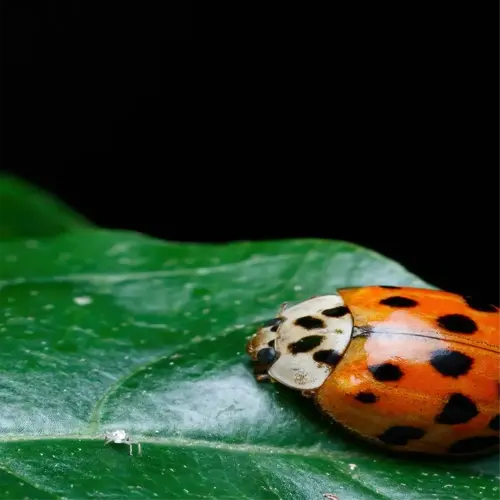10 Low Maintenance Shrubs for Effortless Landscapes

Written by
Michael Sullivan
Reviewed by
Prof. Charles Hartman, Ph.D.Plants that do not require much care can decrease your overall water use by 40-60% each year.
Juniper and boxwood do well in hardiness zones 2-10 and need little pruning.
Beautyberry will have fall berries attracting birds even in shaded locations.
Drought-tolerant plants need to be watered weekly until established.
Prune spring bloomers after they flower so that buds for next year can still form.
Deer-resistant shrubs, such as holly, have bitter compounds that deter deer browsing.
Article Navigation
Shrubs that require little maintenance bring a new meaning and ticket to simplicity about gardening tasks, these resilient plants thrive with little watering, require seasonal pruning, and can withstand pests naturally. These reliable plants are popular with busy homeowners, first-time gardeners, and anyone else who wants beautiful plants and landscapes that don't need constant care. Even environmentally-conscious landscapers appreciate the reduced water waste and the support of local habitats that our native low-maintenance shrubs provide!
Picture a garden that remains alive and colorful through hot summer droughts and through winter frosts. Plants such as juniper, rosemary, and thyme provide texture and color year-round, with no fertilizers required or the daily watering process involved. I've suggested these types of styles to clients looking to do less instead of more in the landscape, watching their yards become self-sustaining spaces.
What makes these shrubs remarkable is their dual function as ornamental anchors and environmental allies. Their deep root systems require 40-60% less water than thirsty lawns while preventing soil erosion. I've witnessed once-neglected shade corners blooming in native-like spicebushs that provide pollen for pollinators with no effort.
You do not need to be a professional to be successful. Choose non-limiting options, such as Beautyberry for fall color or evergreen boxwood for structure. These forgiving plants will hold up to your missed waterings and will tolerate poor soil; sustainable gardening is possible and can be beautiful.
10 Low Maintenance Shrubs
Juniper (Zones 2-9) does best in full sun and has needle-like foliage which deer dislike. It provides interest in the winter due to its blue-gray berries. As it is drought tolerant, it is ideal for slopes. I have planted them near rocky driveways where other shrubs do not survive and have been impressed at how well they anchor erosion.
Boxwood (for zones 5 through 9) is a partial shade shrub that provides an evergreen structure in hedges. Boxwoods have tiny leaves that are resistant to pests, and the leaves turn bronze in winter frost. For small spaces, I recommend dwarf varieties, which typically only need annual pruning, in contradiction to more fussy and fragile varieties.
For sunny areas, Lantana (Zones 8-11) persists blooming abundantly while being accepting of low water needs. Butterflies are attracted to its flowers, which come in yellow or purple clusters. In coastal gardens I've designed, it gives color and life next to roses that die within a few weeks in salty air.
In Part Shade, the Hydrangea quercifolia (Zones 5-9) is a standout with summer flowers and winter peeling bark. The fall color rivals that of the Maples. Planting clients appreciate that it doesn't thrive with fertilizer. Mine was a year-old plant that survived for many years in heavy clay soil and was left to its own devices until occasional pruning.
Viburnum (Zones 2-8) thrives in sun or shade, creating spring blooms and fall berries that are red. Birds eat the berries, even though viburnum tolerates poor soil. I took out privet, an invasive plant, and planted it instead. I also eliminated pesticide use.
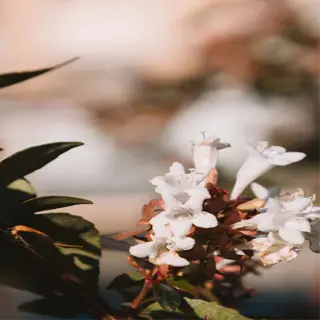
Abelia
- Zones: 4-11. Evergreen in warmer climates, semi-evergreen in cooler regions
- Sun: Full sun to partial shade (4-6 hours daily minimum)
- Growth: Reaches 3-5 feet (0.9-1.5 meters) tall with arching branches
- Blooms: Fragrant white/pink flowers from late spring until first frost
- Care: Drought-tolerant after establishment; prune only to shape in early spring
- Uses: Foundation plantings or mixed borders; attracts pollinators
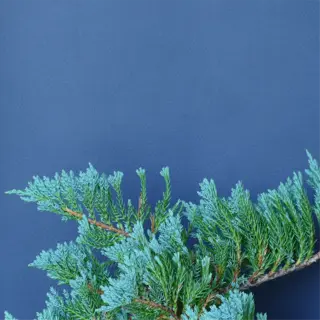
Juniper
- Zones: 2-10. Cold-hardy evergreen with needle-like or scale-like leaves
- Sun: Requires full sun (6+ hours) for dense growth
- Varieties: Groundcover (Blue Rug) or upright (Skyrocket) forms available
- Soil: Thrives in sandy/rocky soil; avoid waterlogged conditions
- Drought: Survives 2-3 weeks without water once established
- Design: Ideal for erosion control or xeriscaping
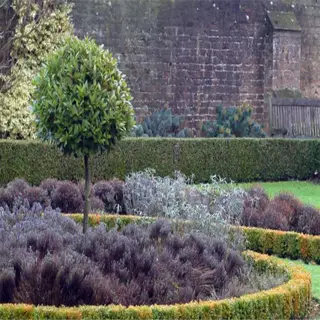
Boxwood
- Zones: 5-9. Slow-growing evergreen with small glossy leaves
- Sun: Tolerates shade but develops denser form in partial sun
- Pruning: Shear once annually in late spring/early summer
- Pests: Resistant to deer; watch for boxwood blight in humid areas
- Uses: Formal hedges or topiary; grows 1-12 feet (0.3-3.6 meters)
- Companions: Pair with hydrangeas for textural contrast

Beautyberry
- Zones: 5-10. Deciduous shrub with vivid violet fall berries
- Sun: Flourishes in shade (4 hours sun) or dappled light
- Wildlife: Berries feed birds from September to December
- Pruning: Cut back to 12 inches (30 cm) in early spring
- Soil: Adapts to clay or sandy soils with moderate moisture
- Design: Naturalized gardens; pair with ferns for woodland appeal

Oakleaf Hydrangea
- Zones: 5-9. Named for oak-shaped leaves turning burgundy in fall
- Sun: Morning sun with afternoon shade prevents leaf scorch
- Blooms: Cone-shaped white flowers in June; fade to pink
- Bark: Peeling cinnamon-colored bark adds winter interest
- Water: Needs weekly watering in first two growing seasons
- Uses: Cottage gardens or as a deciduous screen

Loropetalum
- Zones: 7-10. Evergreen with purple foliage and spidery pink blooms
- Sun: Full sun enhances leaf color; tolerates light shade
- Size: Dwarf varieties (3 feet/0.9m) to tall (10 feet/3m)
- Pruning: Only required to remove dead branches
- Soil: Acidic pH (5.0-6.5); add peat moss if needed
- Feature: Year-round color; blooms reappear sporadically in fall

Indian Hawthorn
- Zones: 7-11. Salt-tolerant evergreen for coastal landscapes
- Sun: Full sun (6+ hours) for optimal flowering
- Blooms: Clusters of pink/white flowers in April-May
- Pests: Resistant to leaf spot disease in well-ventilated areas
- Growth: Compact forms (3 feet/0.9m) perfect for small spaces
- Care: Apply balanced fertilizer (10-10-10) in early spring

Spirea
- Zones: 4-8. Deciduous with cascading branches covered in flowers
- Sun: Full sun (6+ hours) prevents leggy growth
- Varieties: Spring-blooming (Bridal Wreath) or summer (Magic Carpet)
- Pruning: Cut back by one-third after flowering
- Wildlife: Attracts butterflies; deer usually avoid
- Design: Mass plantings for drifts of color
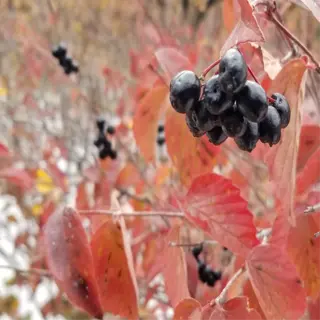
Viburnum
- Zones: 2-11. Versatile genus with evergreen/deciduous varieties
- Sun: Full sun to partial shade depending on species
- Interest: Spring flowers, summer berries, fall foliage
- Size: Ranges from 3 feet (0.9m) to 20 feet (6m) tall
- Berries: Red/black fruits persist into winter (non-toxic to humans)
- Examples: Arrowwood (native) or Leatherleaf (evergreen)

Witch Hazel
- Zones: 3-9. Unique winter blooms (December-March)
- Sun: Partial shade (4 hours sun) in hot climates
- Fragrance: Spidery yellow flowers with spicy scent
- Pests: Naturally resistant to insects and diseases
- Growth: Multi-stemmed form reaching 15 feet (4.5 meters)
- Uses: Understory planting beneath taller trees
Benefits of Low Maintenance Shrubs
As soon as they are established, low maintenance shrubs can reduce water usage by 60% because they utilize groundwater with their deep roots. Juniper, for example, can survive for weeks with no irrigation, unlike lawns that require excessive watering. I have even seen clients, after switching from traditional hydrangea varieties to more drought-tolerant options, cut their water bills in half during the hot summer months.
The use of pesticides in the garden can be reduced by 70% - 90% simply by using plants such as boxwood and witch hazel, which releases a bitter sap that naturally deters pests. In addition to eliminating expensive pesticides, deer-resistant plants eliminate deer problems. For example, when a neighbor changed to holly their sprays stopped, saving her $300 per year, while also providing a refuge for local pollinators.
Pruning a rose plant every month compared to pruning spirea is like an annual trim. Overgrown lilacs will absorb a majority of the day, but compact spirea varieties such as 'Little Princess' will shape themselves into a lovely mound when trimmed. One client claimed that replacing her picky hedges with self-forming abelia and removing the hedges saved her 15 weekends a year.
Attracting attention outside of your home is not an abstract idea. Holly's bright red berries in the winter and the purple foliage of loropetalum in the fall can increase a home's value by 5-15%. A cousin of mine was able to sell her house faster than the identical houses for sale in her neighborhood and a large part of the marketing was that she had established low-maintenance shrubs framing her porch that provided color all year round.
Reduced Watering Needs
- Drought Tolerance: Established shrubs like juniper survive 2-3 weeks without water
- Soil Adaptation: Deep root systems access groundwater (e.g., beautyberry in clay)
- Conservation Impact: Saves 500-800 gallons (1,892-3,028 liters) annually per shrub
Minimal Pruning
- Natural Shapes: Abelia and viburnum maintain form without trimming
- Time Savings: Requires 1-2 annual sessions vs. monthly for roses
- Tool Reduction: Eliminates need for electric trimmers in most cases
Pest & Disease Resistance
- Deer Avoidance: Boxwood and holly contain bitter-tasting compounds
- Insect Barriers: Witch hazel's sticky sap deters aphids and mites
- Fungal Prevention: Open growth habits improve airflow (e.g., spirea)
Year-Round Appeal
- Winter Interest: Oakleaf hydrangea's exfoliating bark persists through snow
- Fall Color: Loropetalum's purple foliage deepens in autumn
- Spring Blooms: Indian hawthorn flowers last 6-8 weeks
Cost Savings
- Water Bills: Reduce outdoor water usage by 30-50% with drought-tolerant varieties
- Chemical Costs: Eliminate pesticide expenses for deer-resistant shrubs
- Landscaping Fees: Save $200-$500 yearly on professional pruning services
Planting and Care Essentials
Certain sun shrubs, such as juniper, need at least six hours of bright sunlight, and they will do well in zones 2-9. In contrast, some shrubs like azaleas will wither whenever they get blasted with harsh afternoon sun. I prefer to plant those azaleas in your case under deciduous trees where they will receive dappled sunlight that mimics their native forest floor. You will still get color without scorching.
Prepare your soil like a sponge, it should be moist but not soggy. For clay-heavy native soil, mix three parts native soil, one part compost, and coarse sand. One of my Texas clients completely transformed her lifeless yard from dull to vibrant in about 8 months. She pH-tested her soil before doing any healing work in her yard and amended small patches of acidic soil with lime before planting.
Watering varies considerably by zone. For example, in zones 7 to 9, trees and new shrubs should be watered twice a week in the summer during drought periods. In the cooler zones 3 to 6, weekly watering is recommended to properly soak the plants. However, my Vermont clients would extend the intervals even longer up to 10 days, and utilize rain and snowmelt to help establish deeper root growth.
Prune spring bloomers such as lilac immediately following blooming in May. For summer leaders such as butterfly bush, prune in late winter. I missed this one time, sheared off a hydrangea in fall, and it didn't bloom for two full seasons. Timing is everything!
Soil Preparation
- pH Testing: Most shrubs thrive in 6.0-7.0 pH; use sulfur to lower or lime to raise
- Amendments: Mix 3 inches (7.6 cm) compost into top 12 inches (30 cm) of clay soil
- Drainage: Create 2-inch (5 cm) mulch ring to prevent root rot in heavy rain areas
Watering Schedule
- Initial Care: Water daily for first 2 weeks; reduce to 2x/week for 6 months
- Deep Watering: Apply 1 gallon (3.8 liters) per foot (30 cm) of height weekly in summer
- Drought Adaptation: Established juniper/rosemary need water only every 21 days
Pruning Techniques
- Timing: Prune spring bloomers (e.g., spirea) after flowering; summer bloomers in late winter
- Tools: Use bypass shears for clean cuts; disinfect with 70% isopropyl alcohol between plants
- Shape: Remove ⅓ of oldest stems annually on viburnum for air circulation
Seasonal Care
- Winter: Wrap boxwood in burlap below zone 6; water evergreens during dry freezes
- Spring: Apply 10-10-10 fertilizer at 1 cup (236 ml) per 3 ft (0.9 m) of height
- Fall: Stop fertilizing 6 weeks before first frost to prevent new growth damage
Pest Monitoring
- Prevention: Inspect leaves monthly for aphids/mites; spray neem oil at first sign
- Traps: Use yellow sticky cards to monitor whitefly populations near shrubs
- Natural Predators: Encourage ladybugs by planting companion flowers like marigolds
Drought-Tolerant and Deer-Resistant Options
Juniper (Zones 2-10) does best in arid coastal climates that find deer pressures and scalding summers. With its textured silver-blue foliage, juniper resists browsing and encourages four-season interest. Once established, it survives without monthly water. In July and August, attempts were made with young plants like 'Blue Star' to gauge their response to flowers, which was marginally successful but would require more consistent monthly watering to develop a better root system.
To make a statement, consider Rosemary (Zones 8-11), native to the Mediterranean, with fragrant leaves, and delicate blue flowers. Deer do not consume this shrub due to its oils, and it can survive year after year on 12 inches of annual rainfall. One of our clients in California replaced her lawn with a rosemary hedge, with the net result of reducing her water consumption by 80%.
Evaluate the drought tolerance of Barberry (receiving irrigation once per month) and Lantana (receiving irrigation twice monthly) in zones 8 to 11. Both have a level of deer deterrence via thorns or a bitter taste. While Lantana has colorful blooms that surpass shrubs, Barberry has red foliage that is exceptional in the fall seasons.
Deer resistance is highly variable, Holly (Zones 5-9), with its spiny leaves, isn't often browsed; whereas Viburnum could get its leaves nibbled if winters are especially harsh. Both make great companions to Russian Sage, an attractive herbaceous perennial that repels a variety of pests due to its fuzzy stems. Plus, the contrast of Russian Sage's lavender plumage and Holly's berries add visual appeal in all four seasons of drama.
Below climate zones 5-9, Yucca doesn't care about drought or deer. After being established, they have sword-like foliage and tall flower spikes that don't require attention. I have observed yucca perform delicately in a neglected median on a highway heralding beauty and resilience aren't mutually exclusive to thriving landscapes.
Drought-Tolerant Champions
- Juniper: Survives 4+ weeks without water; thrives in zones 2-10
- Rosemary: Edible herb; requires only 12 inches (30 cm) annual rainfall
- Crape Myrtle: Heat-resistant; recovers from 95°F (35°C) heatwaves
- Butterfly Bush: Attracts pollinators; needs water only every 14 days
Deer-Resistant Solutions
- Boxwood: Contains alkaloids unpalatable to deer; ideal for hedges
- Holly: Spiny leaves deter browsing; berries feed birds in winter
- Witch Hazel: Sticky sap repels deer; thrives in zones 3-9
- Barberry: Thorny stems protect against deer; drought-tolerant in zones 4-8
Salt-Tolerant Varieties
- Oleander: Thrives in coastal zones 8-10; deer avoid toxic foliage
- Bayberry: Tolerates roadside salt spray; aromatic leaves
- Yaupon Holly: Survives sandy soil and salt; zones 7-9
Pollinator-Friendly Picks
- Lantana: Drought-resistant; attracts hummingbirds and butterflies
- California Lilac: Blooms in dry summers; zones 8-10
- Abelia: Fragrant flowers support bees; zones 6-9
Compact Shrubs for Small Spaces
- Dwarf Juniper: 2 ft (0.6 m) tall; full sun; zones 4-9
- Littleleaf Boxwood: 3 ft (0.9 m) hedge; deer-resistant
- Spirea Japonica: 2-3 ft (0.6-0.9 m); pink summer blooms
Common Mistakes to Avoid
Too much water on low-maintenance shrubs like your juniper can lead to root rot in just a matter of weeks. [They will survive, but that can happen.] Skip your daily trips outside to use the hose. Instead, stick your finger in the soil to see if it's dry to the touch, only water when the top 2 inches of soil are dry. I lost a tree of your benefits in soggy clay soil before changing it to a more gritty soil, that's amended with compost.
Sizing shrubs at their nursery size is a blunder. A common viburnum sold in a 3-gallon pot will spread 8 feet in width. You want to plant them at 150% of their mature width in space. One client had their hedge too close to one another, which led to a fungus growing in their hedge, leading to them spending $1,200 to replace it.
Pruning lilacs in the fall (Zones 3-6) can lead to sacrifices in blooms the following spring. To avoid this, it is best to prune lilacs after blooming, in May. For summer blooming perennials like butterfly bush, late winter pruning will encourage new growth. I killed a hydrangea by miscalculating the zone timing to prune. It took nearly two seasons to recover.
To quietly deprive the shrubs of nutrients, neglecting soil pH in many cases is the culprit - Azaleas require an acidic soil pH (around 5.5) while Lilacs enjoy an alkaline soil pH - (above 7). Simply use a $10 soil pH test kit and follow up with sulfur or lime as appropriate. A neighbor's rhododendrons were yellowing until we dropped the soil pH from 7.2 down to 6.0 - just weeks later, they were bright green again!
Overwatering Established Shrubs
- Consequence: Root rot in juniper/boxwood; yellowing leaves within 3 weeks
- Solution: Water only when top 2 inches (5 cm) of soil are dry
- Tool: Use moisture meter ($15-$20) for accurate readings
Wrong Pruning Timing
- Example: Cutting spring bloomers (lilac) in winter removes next year's flowers
- Fix: Prune summer bloomers (butterfly bush) in late winter/early spring
- Rule: 'Bloom first, prune later' for flowering varieties
Ignoring Mature Size
- Issue: Viburnum planted 3 ft (0.9 m) apart grows into 8 ft (2.4 m) width
- Prevention: Check nursery tags for spread; add 30% buffer
- Cost: $300-$500 average relocation fee for overcrowded shrubs
Poor Soil Preparation
- Error: Planting azaleas in clay without peat moss amendment
- Fix: Mix 50% native soil + 30% compost + 20% sand for drainage
- Test: $10 pH kit reveals acidic/alkaline imbalances
Over-Fertilizing
- Risk: Salt buildup burns roots; leaf scorch in 10-14 days
- Guideline: Apply 1 cup (236 ml) 10-10-10 per 3 ft (0.9 m) height annually
- Alternative: Use slow-release granules every 6 months
5 Common Myths
All shrubs need regular pruning for maintaining health
Many shrubs like juniper and boxwood need very little pruning. Too much pruning causes plants to become stressed and reduces flowering. Only shape a shrub once a year and pruning in general should only occur when removing dead/diseased branches. Plants in their natural forms tend to become more pest resistant and cold hardy.
Drought resistant shrubs will not need to be watered once planted
Even drought resistant varieties, require 1-2 years of weekly watering to establish deep roots. Juniper will need 5 gallons (19 liters) per week and in the first summer. After 18-24 months, gradually transition into natural rainfall.
The monthly application of fertilizer to shrubs makes them grow more quickly.
Using too much fertilizer can result in root burn and excess leggy growth. Most shrubs only require one balanced fertilizer application of 10-10-10 in the spring. Overfeeding your plants easily attracts pests and makes plants not drought resistant. Soil tests will help to prevent nutrient imbalances.
Deer avoid all prickly or fragrant shrubs
Deer browse holly despite spines during food shortages. Truly resistant shrubs contain toxic compounds (e.g., boxwood alkaloids). Combine physical barriers with deer-resistant varieties like witch hazel for best protection.
We cannot plant shrubs in clay or sandy soil
Beautyberry grows in clay and rosemary thrives in sandy soil. Amend planting holes with 30% compost for drainage / nutrients for transplanting shrubs. Aim for the same shrub pH value as the native soil rather than replacing with trees which is costly and impractical.
Conclusion
Low-maintenance shrubs will perform just as well on slopes, in urban patios, or large yards. Whether you are using juniper to frame a driveway or dwarf rosemary to soften a balcony, these plants show that landscape beauty doesn't require constant upkeep of weeding, and pruning even in poorer soils. I have used low-maintenance shrubs in rocky, low-nutrient sites, which struggled to grow grass and any traditional landscaping option, to create beautiful lush landscapes within one growing season.
Select native varieties such as beautyberry or witch hazel and, in addition to low-maintenance care, you are rebuilding local ecosystems. Birds and other pollinators flock to these lower-maintenance shrubs to create a habitat in your backyard. A client who removed the turf for native spicebush and allowed their once wilting lawn to flourish became a sanctuary for birds indicating that sustainability starts at the plant level.
Your zone with the USDA determines your future success. Azaleas do well in the 6-8 range but if you live in a colder area and don't apply some sort of winter mulch, you will most likely lose them. So, before you plant anything, make sure to check out the USDA map online, it only takes a couple of minutes and it will prevent making a mistake that will cost you money. I helped a friend who lives in Zone 5 switch from camellias to viburnum. She saved herself years of digging.
Begin with a small change. This month, you can swap out one high-maintenance plant with a drought-tolerant shrub. Plan to share your progress online to encourage others to do the same. Each native holly or lantana is a little win against water waste and chemicals. Easy gardens can lead to a big change in protecting the planet.
External Sources
Frequently Asked Questions
What defines a low maintenance shrub?
Low maintenance shrubs require minimal watering, pruning, and pest control while thriving in their native climate. Ideal choices tolerate drought, resist deer, and adapt to soil conditions without frequent fertilization or specialized care.
Which shrubs provide year-round visual interest?
Evergreen shrubs like juniper and boxwood retain foliage in winter, while deciduous varieties like oakleaf hydrangea offer seasonal blooms, fall color, and textured bark. Beautyberry adds vivid berries in autumn that persist into winter.
How do I design a low-maintenance landscape?
Prioritize these strategies:
- Group shrubs with similar water and sunlight needs
- Use mulch to suppress weeds and retain moisture
- Select native species adapted to local pests and climate
- Incorporate hardscaping to reduce planting areas
When is the worst time to prune shrubs?
Avoid pruning spring-blooming shrubs like lilac after buds form in late summer or fall. Never trim during extreme heat or drought, as cuts stress plants. Damaged/diseased branches should be removed immediately regardless of season.
Are boxwoods suitable for beginners?
Yes, boxwoods are low maintenance but need well-drained soil and annual shaping. They resist deer, tolerate shade, and thrive in zones 5-9. Avoid overwatering and plant in areas with airflow to prevent fungal issues.
How close should shrubs be planted to a house?
Space shrubs at least 3 feet from foundations to prevent root damage and allow airflow. Dwarf varieties (under 3 ft tall) can be placed 2 feet away. Consider mature width, larger shrubs need 5+ feet of clearance.
Which flowering shrubs need the least care?
These varieties thrive with minimal attention:
- Abelia: Fragrant blooms from spring to frost
- Spirea: Drought-resistant with cascading flowers
- Loropetalum: Year-round color and spider-like blooms
- Butterfly Bush: Attracts pollinators, self-seeds easily
Do low-maintenance shrubs improve home value?
Yes, mature drought-tolerant shrubs like holly or viburnum boost curb appeal and reduce landscaping costs. They signal a well-maintained property and can increase resale value by 5-10% in competitive markets.
Can I grow low-maintenance shrubs in containers?
Dwarf juniper, boxwood, and rosemary adapt well to pots. Use well-draining soil, water when the top 2 inches dry out, and repot every 3 years. Avoid metal containers in hot climates to prevent root overheating.
What common mistakes kill low-maintenance shrubs?
Top errors include:
- Overwatering causing root rot
- Planting in wrong USDA zones
- Using heavy clay soil without drainage
- Neglecting deer protection in high-risk areas
- Pruning more than 1/3 of growth annually

